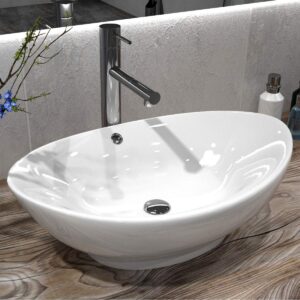Introduction
Switches are essential components of any electrical system, controlling power flow to lights, appliances, and other devices. For years, traditional switches have been the standard choice, offering a simple, cost-effective way to turn things on and off. However, with advances in technology, smart switches have emerged as a modern alternative, providing enhanced convenience, energy efficiency, and automation.
As homeowners and businesses seek ways to upgrade their electrical systems, many wonder whether they should switch from traditional switches to smart switches. This article will explore the differences between the two types, their benefits and drawbacks, and whether upgrading is worth it. One popular brand in the smart switch industry is NaLite, offering innovative solutions for modern homes. Let’s dive into the comparison.
What is a Traditional Switch?
A traditional switch is a simple electrical device that manually controls the flow of electricity to a connected load, such as a light fixture. These switches come in various styles, including single-pole, three-way, and dimmer switches.
Traditional switches operate using mechanical toggles or buttons, requiring physical interaction to turn lights on or off. They do not require a wireless connection, making them reliable and easy to install. Since they have been used for decades, they are widely available and relatively inexpensive. However, they lack smart capabilities, meaning you cannot control them remotely or program them for automation.
What is a Smart Switch?
A smart switch, such as those offered by NaLite, is an advanced version of a traditional switch that connects to a home automation system. Smart switches can be controlled remotely using a smartphone app, voice commands, or home automation hubs like Amazon Alexa, Google Assistant, or Apple HomeKit.
Smart switches typically feature Wi-Fi or Bluetooth connectivity, allowing users to schedule lighting changes, set automation routines, and monitor energy usage. Many models also include motion sensors, dimming functions, and integrations with other smart devices. While they require an initial investment, they provide enhanced convenience and energy efficiency over time.
Key Differences Between Smart Switches and Traditional Switches
The main differences between traditional and smart switches revolve around convenience, energy efficiency, installation, and cost. Here’s how they compare:
- Control and Convenience: Traditional switches require physical interaction, while smart switches can be controlled remotely via an app or voice assistant.
- Energy Efficiency: Smart switches can reduce energy waste by turning off lights automatically when not in use.
- Automation: Smart switches allow users to schedule lighting and integrate with other smart home devices.
- Installation Complexity: Traditional switches are easy to install, while smart switches may require a neutral wire and Wi-Fi setup.
- Cost: Traditional switches are much cheaper, while smart switches require a higher upfront investment but may save money in the long run.
These differences make smart switches a great choice for modern homes, especially when integrated with systems like NaLite smart home solutions.
Benefits of Upgrading to a Smart Switch
Switching from traditional switches to smart switches offers several advantages:
- Convenience and Remote Control: With a smart switch, you no longer have to get up to turn off the lights. Instead, you can use your smartphone, tablet, or voice assistant to control them.
- Energy Savings: Smart switches can help reduce energy consumption by turning off lights automatically when no one is in the room. They can also provide energy usage reports, helping you track and manage electricity bills.
- Enhanced Security: Smart switches can be programmed to turn lights on and off while you are away, giving the illusion that someone is home, which can deter burglars.
- Customizable Lighting: Many smart switches offer dimming options and customizable lighting settings, allowing you to create the perfect ambiance in your home.
- Integration with Smart Home Systems: Smart switches can work with other smart devices, such as security cameras, thermostats, and sensors, creating a seamless home automation experience.
By upgrading to smart switches from brands like NaLite, you can enjoy these benefits while making your home more efficient and future-proof.
Challenges of Using Smart Switches
Despite their many benefits, smart switches do come with some challenges that should be considered before making the switch:
- Higher Upfront Cost: Smart switches are more expensive than traditional switches, both in terms of the device cost and potential installation fees.
- Wi-Fi Dependency: Smart switches rely on an internet connection, meaning they may not function properly during network outages.
- Installation Requirements: Some smart switches require a neutral wire, which may not be available in older homes, making installation more complex.
- Learning Curve: Smart home technology may take some time to set up and learn, especially for those who are not tech-savvy.
However, many smart switch brands, including NaLite, offer user-friendly designs and installation guides to help make the transition easier.
Should You Upgrade to a Smart Switch?
Deciding whether to upgrade to smart switches depends on your needs, budget, and home automation goals. If you prioritize convenience, energy efficiency, and home security, a smart switch is a worthwhile investment. However, if you prefer a simple, cost-effective solution, traditional switches may still be the best option.
Consider the following questions before making a decision:
- Do you frequently forget to turn off lights?
- Do you want to control your lights remotely or with voice commands?
- Are you interested in automating your home’s lighting?
- Is your home compatible with smart switch installations?
If you answered “yes” to most of these questions, upgrading to smart switches, particularly NaLite smart switches, could be a smart choice for your home.
Conclusion
Smart switches and traditional switches each have their advantages and drawbacks. While traditional switches are reliable, cost-effective, and easy to install, smart switches provide unmatched convenience, energy efficiency, and security features.
If you’re looking to modernize your home, reduce energy waste, and integrate with a smart home system, upgrading to smart switches like NaLite can be a great investment. However, for those who prefer simplicity and a lower upfront cost, traditional switches remain a practical option.
Ultimately, the choice depends on your lifestyle, budget, and home automation preferences. As smart home technology continues to evolve, making the switch to a smart switch may become an essential step in creating a more connected and efficient living space.






